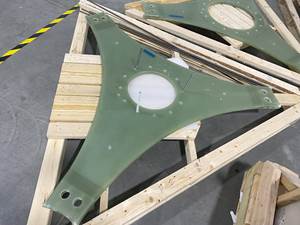Winds of change
CT editor-in-chief Jeff Sloan suggests a dose of moderation for those who hold post-recession expectations for recapturing pre-recession wind-energy growth rates.
As I write this column (May 17, 2011), the cost of a barrel of light sweet crude oil is almost $97. This is down slightly from the most recent peak of about $110, which came in mid-April and reminded many drivers of the expensive summer of 2008. Then, as now, when oil and gas prices start to climb, there is a tendency to believe that all petroleum-based resources are getting more expensive. The corollary belief that follows is that renewable energy sources — most significantly for composites, wind — are, therefore, more cost-competitive with their nonrenewable cousins.
Most of the nation’s electricity, however, comes from coal-fired plants (46 percent) and natural gas (21 percent). This means that wind’s biggest energy competitors are coal and natural gas, not oil.
So the question facing the wind energy industry is not What is the cost of a barrel of oil? but rather, What’s the cost of electricity from coal and natural gas? And the answer could dictate the growth of the wind energy industry in general, and the use of composites in wind turbine blades in particular.
Coal and natural gas on the open market are priced in different units, so a fair apples-to-apples comparison to wind requires a look at dollars per kilowatt-hour for each. These data, however, are difficult to pin down. Nevertheless, my review of available information from government and other sources shows that, in general, the cost per kilowatt-hour of wind is comparable with coal and gas. Wind energy ranges from $0.05 to $0.11/kwh; coal ranges from $0.09 to $0.12/kwh; natural gas ranges from $0.05 to $0.09/kwh.
This clearly puts wind energy in the mix, but this is an apparent competitiveness only. The truth is that the U.S. wind energy industry benefits greatly from federal investment tax credits that defray part of the cost of building and operating a wind farm.
The problem is that renewable energy tax credits in the U.S. have become political footballs, propped up by the U.S. Congress for one, two or three years at a time, and then haggled over nearly every year before they are extended again. If you’re a wind farm developer, this yo-yo effect is not conducive to good strategic planning. In fact, the lack of a permanent renewable electricity standard (RES) in the U.S. creates a business atmosphere that antagonizes wind energy expansion (see additional commentary on wind-blade economics in our “From the Podium” column, titled "Wind blade manufacture: Opportunites and limits," under "Editor's Picks").
The composites industry has been riding the wind-blade wave for several years now and, despite the 2010 dip, there is some optimism that growth will return to this important segment. Indeed, 2011 wind is off to a promising start — see our news story about the most recent American Wind Energy Assn. (Washington, D.C.) report by clicking on "AWEA: Wind power growth ...." under "Editor's Picks," at top right. But it’s probably time to question the sustainability of pre-2010 wind energy growth. A permanent RES is as good as dead in the U.S. Congress. Natural gas is notoriously inexpensive and coal is notoriously plentiful. Although it’s clear that wind has a place in the U.S. energy portfolio, and that we might be able to expect steady wind energy growth for several years, it is probably time to be more realistic and acknowledge that the hoped-for super-expansion of wind installations might be a relic of prerecession optimism.
Related Content
RTM, dry braided fabric enable faster, cost-effective manufacture for hydrokinetic turbine components
Switching from prepreg to RTM led to significant time and cost savings for the manufacture of fiberglass struts and complex carbon fiber composite foils that power ORPC’s RivGen systems.
Read MorePolar Technology develops innovative solutions for hydrogen storage
Conformable “Hydrogen in a Box” prototype for compressed gas storage has been tested to 350 and 700 bar, liquid hydrogen storage is being evaluated.
Read MoreCeramic matrix composites: Faster, cheaper, higher temperature
New players proliferate, increasing CMC materials and manufacturing capacity, novel processes and automation to meet demand for higher part volumes and performance.
Read MoreHigh-tension, vertical filament winding enables affordable flywheel energy storage system
French startup Energiestro’s prototype solar energy flywheel-based storage system aims to reduce costs with glass fiber composites and prestressed concrete.
Read MoreRead Next
Wind blade manufacture: Opportunities and limits
At ÂÌñÏ×ÆÞ's 2011 Wind & Ocean Energy Seminar, held April 13-14 in Portland, Maine, Stephen Nolet, principal engineer/director of innovation at TPI Composites Inc. (Scottsdale, Ariz.) briefed the audience on TPI’s view of blade design and manufacture.
Read MoreCutting 100 pounds, certification time for the X-59 nose cone
Swift Engineering used HyperX software to remove 100 pounds from 38-foot graphite/epoxy cored nose cone for X-59 supersonic aircraft.
Read MoreNext-gen fan blades: Hybrid twin RTM, printed sensors, laser shock disassembly
MORPHO project demonstrates blade with 20% faster RTM cure cycle, uses AI-based monitoring for improved maintenance/life cycle management and proves laser shock disassembly for recycling.
Read More












